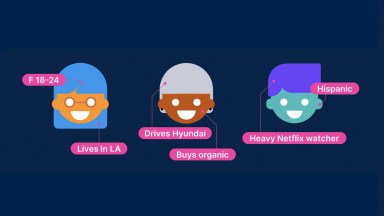In an era of internet-connected ubiquity, media fragmentation has given consumers seemingly countless ways to satiate their hunger for content. Yet while many of the options we engage with on the TV glass attract big headlines in isolation, they don’t have the ability to showcase just how much internet connectivity has altered our TV usage over the past decade.
Connected ubiquity: What does that mean?
At a high level, it’s easy to credit the growth of streaming as the driver of internet-connected media consumption, given the big headlines around hit programs like Tiger King, Squid Game and Ted Lasso. But truth be told, TV-connected devices provide consumers with access to significantly more content than what’s available on the big subscription video-on-demand (SVOD) platforms.
In August 2021, more than 81% of U.S. homes had at least one TV-connected device, providing consumers access to anything the internet has to offer. That’s up from 72% back in August 2019, and connected device ownership includes everything from smart TVs, video game consoles, and over-the-top (OTT) devices like Amazon Fire TV Sticks and Roku devices. Additionally, a growing portion of TV homes rely on the internet for all of their TV engagement (free or paid), including traditional, scheduled programming. In fact, cord cutters (homes that do not subscribe to traditional cable/satellite services) now account for 41% of all U.S. TV households.
Adding it all up: The big impact of device connectivity
In light of the many ways that consumers engage with their TVs, it’s difficult to see just how much our content experience has changed as a result of internet connectivity. But when we take a step back and aggregate all of our TV usage, the shift to using TV-connected devices over the past 10 years is significant. In September 2011, the average consumer 2 and older only spent 25 minutes each day with TV-connected devices. Ten years later, the time spent has grown to one hour and 23 minutes. Among younger groups, specifically 2-11, 12-17 and 18-24, the shift has been significantly more extreme.
COVID-19 amplifies adoption and access
Availability, access and new media options have all played a role in the increase in TV connected device usage in recent years. The arrival of COVID-19 in early 2020, however, boosted the speed of adoption when compared with the years leading up to the pandemic.
Between 2011 and 2019, the annual increase in TV connected device usage among people 2 and older was modest, remaining flat or inching up a few percentages. Between September 2020 and September 2021, however, the share of time spent jumped from 26% to 32%. At a more granular level, the pandemic stimulated a notable jump in usage among older generations, as time spent among people 50-64 jumped from 15% to 22% over the last year.
A new kind of fragmentation
For consumers, the breadth of today’s media options presents seemingly unlimited content options to keep even the pickiest tastes entertained.
In the streaming space alone—across subscription and ad-supported models—consumers had more than 200 options at the midway point of this year, with more likely to come online in the coming year. The term fragmentation has been overused to describe the options in the media industry for years, yet transition to digital video increases the challenge for content creators, advertisers and agencies looking to best engage with consumers. While streaming accounted for 28% of total TV usage in October, for example, 9% of that share is attributed to providers outside the big five (Netflix, YouTube, Hulu, Prime Video and Disney+).
For the industry at large, more choice for consumers translates into more to keep track of, largely because new platforms and channels rarely replace existing options outright. And in the case of internet connectivity, new options and channels all exist in their own silos. This is notably different from the impact of a new cable channel coming online or a broadcast channel going off the air. Yet the easiest way to navigate increasing fragmentation is by using the proper data set to best understand where consumers are, what they’re engaging with and whether they’re coming back for more.



